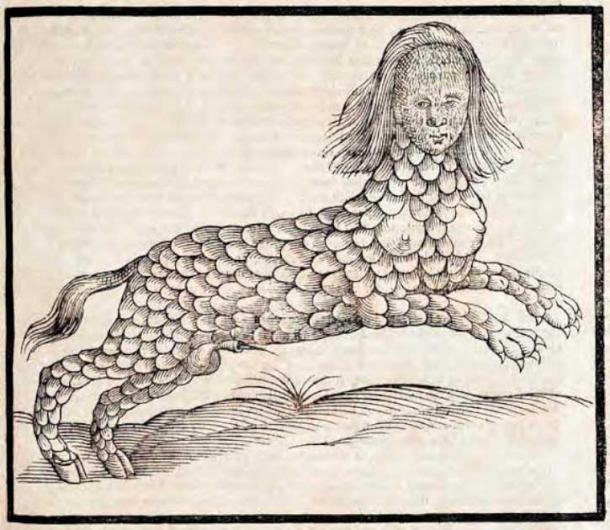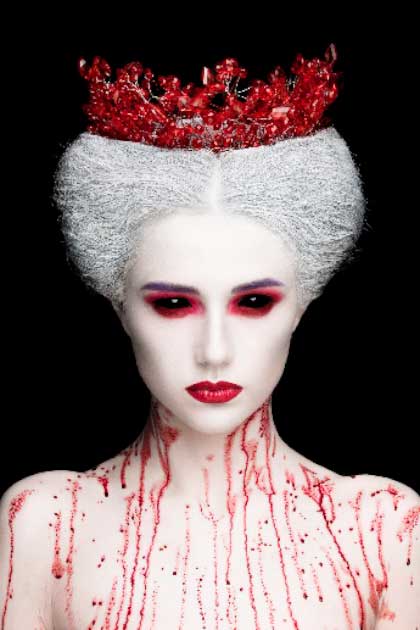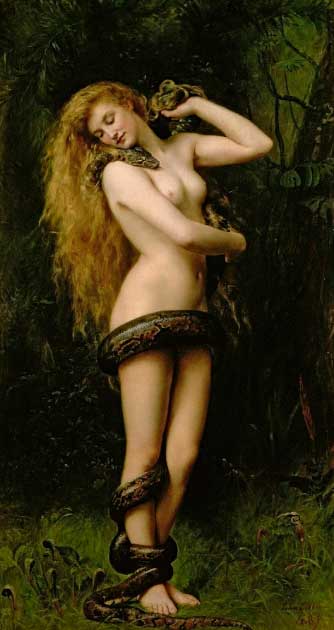
The Lamia of Ancient Greek Mythology: The Original Bogeyman
Ancient Greek mythology is absolutely full of things that go bump in the night. It’s one of the many reasons Greek mythology is still so popular today. How many films, novels, and video games take inspiration from the monsters found in these ancient myths? A classic example is the Lamia, a vicious child-devourer and a being so monstrous it has been described as the original bogeyman, although in this case, she was a woman.
Who or What was the Lamia?
Depictions of the Lamia have varied over the centuries. What began life as a very specific type of monster became a catch-all term for an entire subset of monsters by the Medieval era.
In early Greek myths, the Lamia started life as a beautiful woman, wronged by a god. Her name was Lamia and she was the queen of Libya. Like so many women in Greek mythology, she was unfortunate enough to have an affair with Zeus.
In typical fashion, Zeus’ wife Hera overreacted and kidnapped Lamia’s children. Sources conflict but Hera either hid the children away, killed them, or worst of all, caused Lamia to kill them.
To ensure that Lamia got no respite from her grief, Hera then cursed the queen with insomnia. Lamia quickly went insane. She began snatching and then eating any child she came across. The monstrous acts took a toll on her body, transforming the once beautiful queen into a monster.
Her physical depiction changes between myths and sources. Sometimes she is described as being bestial in appearance. More often than not, she is described as having the top half of a beautiful woman but the bottom half of a lizard or snake.
Zeus, in a bizarre attempt to make things right, gifted Lamia with the ability to remove her eyes (so she could rest) and see the future. How these gifts were meant to combat chronic insomnia and the loss of one's children is unclear.
An ancient Greek historian, Diodorus Siculus, attempted to give a rationalized account of Lamia’s story. In his version, Lamia was a Libyan queen who was driven mad by the loss of her children and ordered her troops to kidnap children from their mothers and kill them. In his version, the queen was so perpetually drunk it was as if she could not see.

Drawing of the Lamia (Public Domain)
The Lamia in Folklore: Nightmare Fuel for Children
The Lamia soon became a kind of bogeyman to the ancient Greeks. If a child was misbehaving, then a mother or nanny could invoke the Lamia to frighten them. Several historians in antiquity, such as Diodorus, recorded the name being used as a kind of threat in this way.
In the original story Lamia killed and ate the children, but the story seemed to have softened over time. In some nurses’ versions of the story, the children are swallowed alive and can be retrieved.
In the later classical period, the story of the Lamia changed once again. Rather than being used as a story to frighten young children, it was used as a story to frighten sexually adventurous young men. In these stories, the Lamia is a kind of phantom that seduces young men, fornicates with them, and then eats them.

The Lamia myth transformed from child-eating monster to killer seductress (artyme / Adobe Stock)
Lamia in the Middle Ages
As a monster of myth, the Lamia has major staying power. By the early Middle Ages, scholars were still writing about the mythological beast. In doing so, they somehow dragged it into biblical teachings.
At this point, Lamia had become a general term for a class of phantom beings that stole children and mutilated them. In the Vulgate (a 4th-century Bible translation) Lamia is used as a translation of Lilith from the Hebrew Bible. In Judaic mythology, Lilith was Adam’s first wife, a primordial she-demon banished from Eden for not listening to Adam. She is often portrayed as the mother of all monsters.
During this period, the church used the Lamia to warn its followers against certain behaviors. Pope Gregory I claimed the Lamia represented heresy and hypocrisy. In the 9th century AD Hincmar, archbishop of Reims, described the Lamia as a female reproductive spirit. The Lamia was described as a supernatural spirit that caused divorces by tempting the husband away.
- Patasola: The Destructive Femme Fatale of the South American Jungle
- Samodiva: The Life-Sucking Temptress and Wood Nymph of Bulgarian Folklore

Oil painting of Lilith by J.M. Collier, 1892 (Public Domain)
Women as Monsters in Ancient Greece
Women being described as monsters was a major trend in Greek mythology. This raises the troubling question of why so many ancient Greek monsters are women. Critic Jess Zimmerman captures this precisely when she said, “Women have been monsters, and monsters have been women, in centuries’ worth of stories because stories are a way to encode these expectations and pass them on”.
When a monster in ancient Greek mythology is female in depiction, it is either because she has done something wrong or “unwomanly”. Lamia is a prime example. She has an affair with Zeus, so she gets turned into a baby-eating monster. Her crime? Being the other woman.
In ancient Greek mythology, when women act in ways unbecoming they become monsters that must be subdued by heroic men. As mentioned earlier, over time the Lamia morphed into a phantom that seduced and then killed young men. This is incredibly similar to stories of succubi, harpies, and even some depictions of mermaids.
During the medieval ages, it is little wonder that Christian scholars jumped on the idea of the Lamia as an evil female spirit that seduced married men. Their teachings already had a preoccupation with Eve and women being responsible for the original sin. A female spirit that made men cheat on their wives fit perfectly.
Lessons From the Lamia
The Lamia was one of the very first bogeymen. It started as a Greek myth about yet another one of Zeus’ conquests and morphed into a scary story mothers told their children. Over time, the story of the Lamia has kept evolving.
However, this wasn’t the myth's original purpose. The ancient Greek myths began life as religious stories and allegories. They were meant to be moralistic, at least to some extent. The lessons they sought to tell their audiences reflected people's opinions of the times.
The Lamia is an ancient Greek horror story about a baby-eating monster, but it is also a lesson in how femininity was seen in ancient Greece: as something to be feared. Women who did not follow social conventions were dangerous monsters who needed to be put into their place.
Top image: The Lamia demon terrified ancient Greeks. Source: Andrey Kiselev / Adobe Stock
References
Claus. P. 2022. Lamia, the Man-devouring Goddess of Greek Mythology. Greek Reporter. Available at: https://greekreporter.com/2022/04/27/lamia-the-man-devouring-goddess-of-greek-mythology
Graves. R. 1955. "Lamia" in Greek Myths. Penguin. Available at: https://archive.org/details/greekmythsvolume00robe/page/205/mode/2up
Lamia. 2021. GreekMythology.com Available at: https://www.greekmythology.com/Myths/Monsters/Lamia/lamia.html
McGreevy. M. 2021. Why So Many Mythological Monsters Are Female. Smithsonian Magazine. Available at: https://www.smithsonianmag.com/arts-culture/meet-female-monsters-greek-mythology-medusa-sphinx-180977364/















